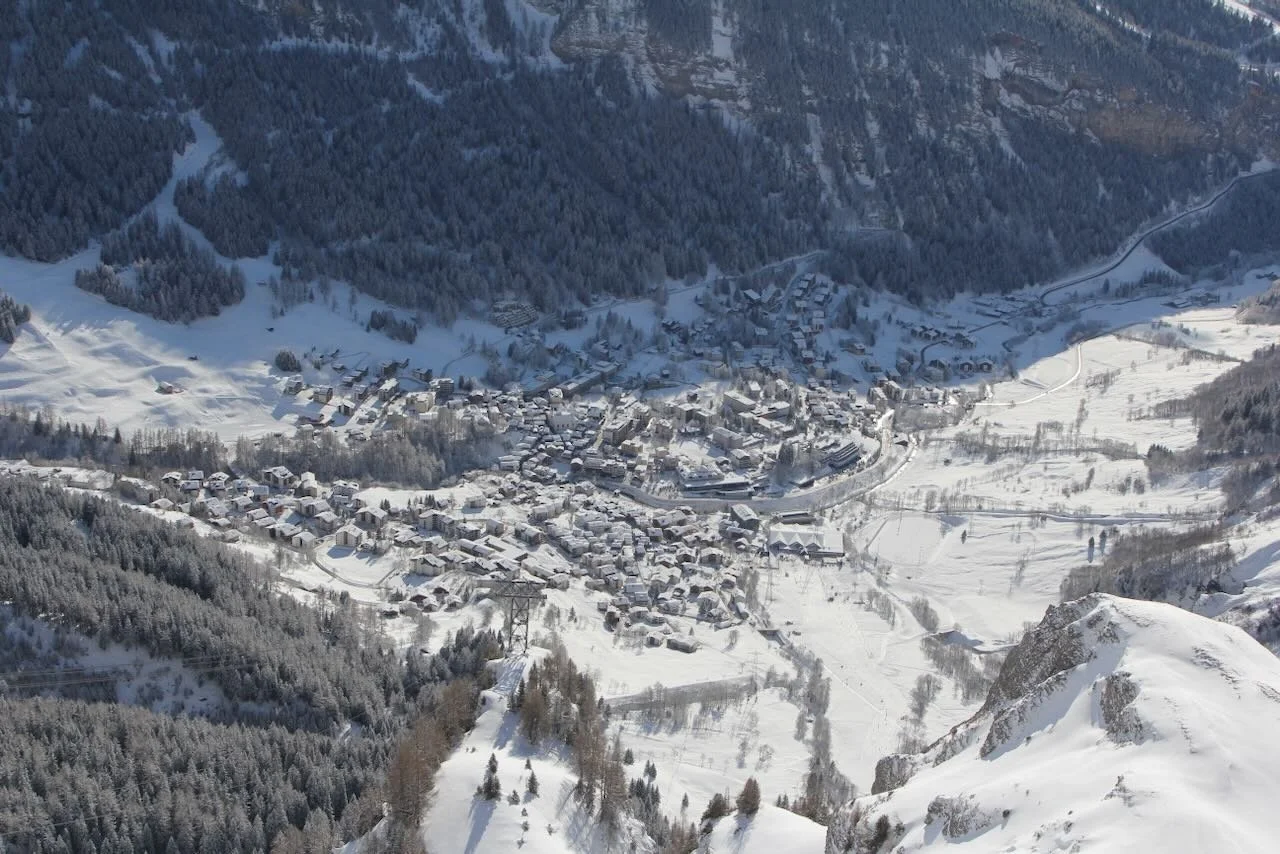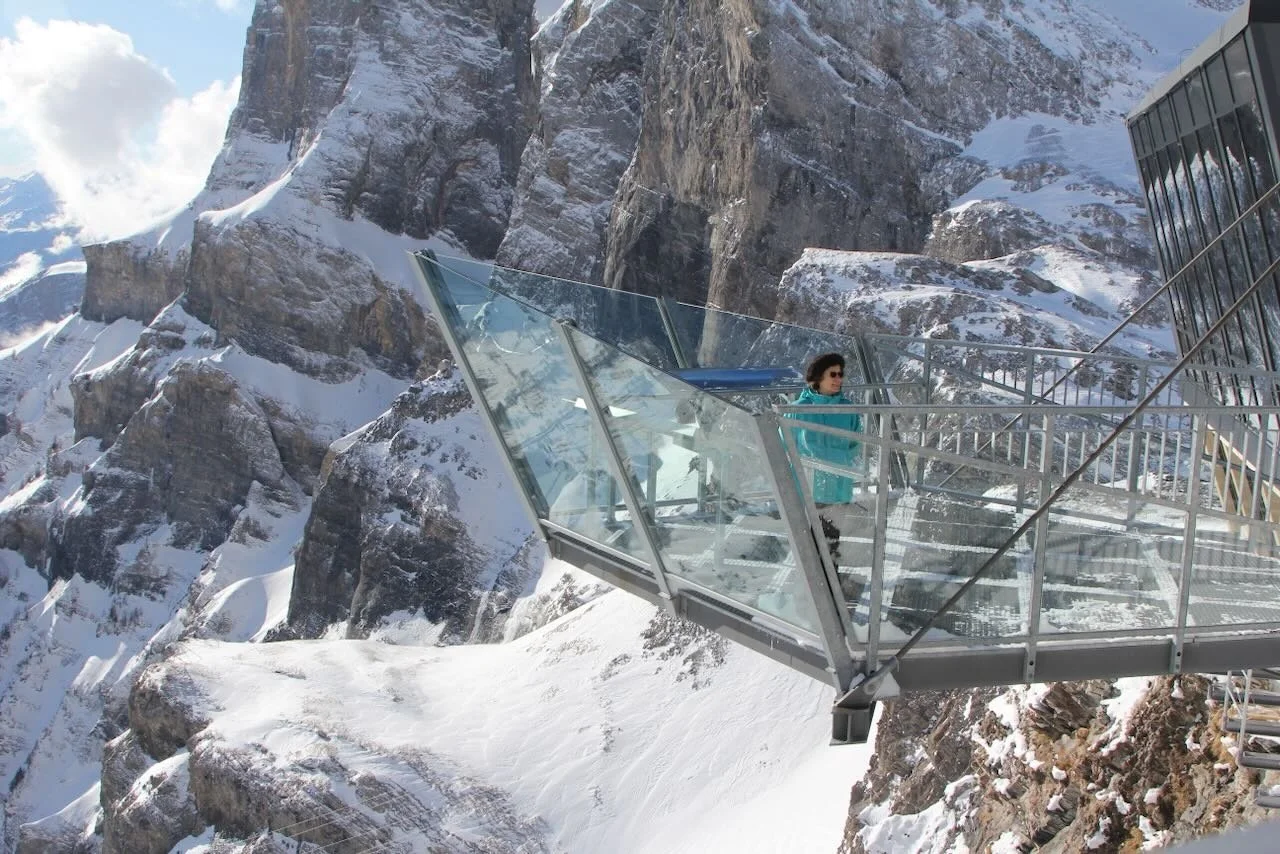Leukerbad, a thermal spa high up in the Swiss Alps
Located in a basin, surrounded by the high, rocky cliffs of the Gemmi pass, Leukerbad, or Loèche-les-Bains for the French-speaking Swiss, is the largest spa resort in Switzerland. It’s an extremely picturesque place for some, inauspicious for others. “Few people making plans for a holiday would elect to come here,” wrote James Baldwin in 1953, adding that “the landscape is absolutely forbidding, mountains towering on all four sides, ice and snow as far as the eye can reach.”
But, me? I found it magnificent, and that was even before I realised this was my last little escapade before the Covid epidemic hit just a few days after my return home.
The Romans had already discovered the spring and appreciated the virtues of the waters which flow at a balmy 51ºC from 65 thermal springs, the most important of which, the Saint-Laurent, surfaces in the village square at the foot of the Lindner Hotels. Despite the plural name, the Lindner is, in fact, a single establishment, set up in three adjacent buildings which have different names so when you book it’s difficult, if not impossible, to know which one you’ll end up in: the Grand Bain, in a building that dates back to 1645 and is the oldest in the village; the White House, recognizable by its faded red shutters and, opposite, the Hôtel de France built in 1845. The buildings are linked together by a maze of corridors, elevators and staircases which are a little confusing the first time one is trying to find one’s room!
It is however very pleasant to cuddle into the white bathrobe and cosy your feet into the slippers provided in each room and have direct access – through another maze of corridors – to the thermal baths specifically assigned to the hotels or to the Walliser Alpentherme open to the public in 1993. And there you can relax in deliciously warm water, either outside admiring the majestic snowy landscape, or indoors. No one actually swims! Instead I waited patiently for a space to become available on one of the underwater benches which releases delicious bubbles, and one comfortably installed, enjoyed watching youngsters jump out of the hot water to roll in the snow. Not for me!
After an hour or two in the water I noticed the little sign which recommends that you shouldn’t stay in there for more than 20 minutes!! I’m not sure why because I suffered no ill effects at all from my prolonged stay. Perhaps to allow others a chance to sit on the bubbly benches? But I felt no remorse because the baths were not in the least bit crowded in early February.
This moment of total relaxation is all the more pleasant after a long walk. Daubensee is a lake located at an altitude of 2,200m on the Gemmi Pass. You can reach it by cable car which swishes you up in a few minutes from 1,401m to 2,350m from where there is a truly breathtaking panorama of the highest Swiss peaks. I could even see the Matterhorn 47kms away.
Once you’ve had a hot drink at the Berghotel Wildstrubel Gemmipass and after having ventured onto the trapezoidal gallery in filigree steel through which you have a view plunging down 250m below your feet, you go down to the lake. You can do so either on your own two feet, or sitting on a sled that you rent on site, or by cable car. I opted for my own legs! At lakeside, snowshoe enthusiasts have a choice of three marked trails whilst cross-country skiers can use two groomed trails, one 7km long on the frozen lake and another 10km long. Or you can simply walk around the lake enjoying the quiet and sparkling winter scenery.
For those who want a bit more action, then back in the village there is a Snowpark with 6kms of Freeride slopes accessible by three lifts. And then on the Torrent side of the valley, the Leukerbad-Rinderütte cable car takes you 2,350m to the alpine ski slopes. This small area offers only 20 slopes totalling 53.5kms, including 27kms of red slopes, 17kms of black slopes and 3.5kms of blue slopes. To serve them there are two gondolas, a six-person chairlift and two lifts.
Leukerbad is also the place where U.S. writer James Baldwin stayed with the family of his lover, Lucien Happersberger. The first time he spent two weeks there in the summer of 1951. And then he returned, twice, in the winter. A plaque commemorates his presence with a large extract from his essay "Stranger in the Village" published in 1953 in Harper's Magazine, then in a collection of essays "Notes of a Native Son" in 1955. “From all available evidence no black man had ever set foot in this tiny Swiss village before I came. I was told before arriving that I would probably be a “sight” for the village; I took this to mean that people of my complexion are rarely seen in Switzerland, and also that city people are always something of a “sight” outside of the city. It did not occur to me – possibly because I am an American – that there could be people anywhere who had never seen a Negro.”
And then he describes the village, which although at the time was only four hours from Milan and three hours from Lausanne, but “there is no movie house, no bank, no library, no theatre; very few radios, one jeep, one station wagon; and, at the moment, one typewriter, mine, an invention which the woman next door to me here had never seen.... There are four or five hotels, all closed now, and four or five bistros.”
Sixty-seven years later, there are still very few cars because they are prohibited in the old town. But for the rest, the village has fully entered the 21st century with its internet café, its banks, its art galleries, its boutiques, its restaurants. And, obviously, visitors from all walks of life.

















